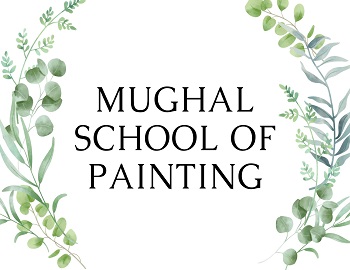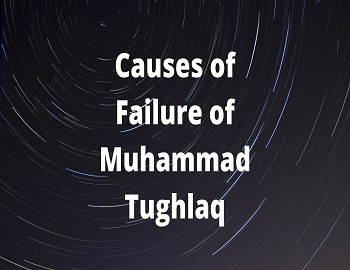Mughal School of Painting:
The Mughal School of Painting represents one of the most significant phases of Indian art. Mughal painting was largely influenced by the Persian School of Painting, which again was an amalgam of the Chinese, the Indian, the Buddhist, the Bactrian and the Mongolian influences. The Mughal School of Painting is broadly represented in two forms- the portraiture and miniature in the form of book illustrations, in which the Mughal painters gained the greatest perfection. This school was broadly aristocratic, divorced from social realities and the masses, and it remained confined to the corridors of the Mughal court.
Though the foundation of Mughal painting was laid by Humayun, it reached full maturity during the 17th century. Humayun developed a love for painting during his exile in Persia. He brought two master painters Abdus Samad and Mir Sayyid Ali. Humayun and Akbar took lessons from them and employed them to prepare illustrations for the Persian classic Dastan-i-Amir Hamzah better known as Hamzanama. The work consisted of nearly 1200 paintings drawn in bold and vivid colours.
During the reign of Akbar, there was a fusion of Persian and Indian style of painting. The walls of Fatehpur Sikri were decorated with masterpieces of paintings by the joint labour of Hindu and Persian artists. Abul Fazal has mentioned of Basawan, Daswant and Haribansh. Of the Muslim artists, Abdus Samad and Farrukh Beg were the most famous. The work of the celebrated painter Daswant is to be found in the Razmnama. Akbar was a great lover of painting. He regarded painting as a means of realising the glory of God and made it very beautiful through remarried painters. During the later years of Akbar’s reign, Mughal painting had begun to feel the impact of European painting, which became more dominant during the reign of Jahangir.
Mughal painting reached a climax under Jahangir. He himself was an art critic who could distinguish the work of each artist in a composite picture. The Jahangir school is noted for its love of nature- a number of subjects from animal and birdlife were painted. The emphasis is on naturalism, but there is a keen desire to reveal the innate beauty behind the out form. Book illustrations were almost given up save for a few exceptions which include copies of the Tuzuk-i-Jahangiri. The expression of a Jahangir painting is subdued and rather slow in movement, but it is free from dullness. Its charm lies in its probe into the ‘beautiful’. The miniature portraiture also reflects extremely fine brushwork. Ustad Mansur excelled in painting birds. Of the Hindu painters, the most eminent was Bishan Das a portrait painter. Other famous painters of the age were Nadir, Murad, Manohar and Govardhan.
Shah Jahan patronized painting, but ‘he lacked Jahangir’s aesthetic sense in this field’. Shah Jahan’s production ‘displays an extravagant use of richness in decorative details and colours’. The compositions become static and symmetrical, the colour heavier, the texture and ornament more sumptuous’. Aurangzeb was so averse to painting that the highly developed art of miniature painting headed for a steady decline and during the late 17th and 18th centuries it migrated to regional centres of painting where it prospered under different styles, such as Pahari and Rajput (particularly Jaipur, Bikaner and Bundi) styles.









Comments (No)